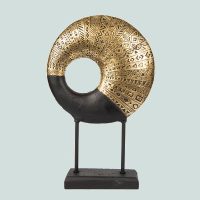Valuing And Appraising Artwork In An Estate

When an estate is opened in probate court, the value of most of the items in an estate need to be valued. That may be for creditors, for tax or IRS purposes, or for the purpose of eventual liquidation, if property will be sold for funds.
The Problem with Artwork
For some items, it is easy to get a value. Although there is some room for dispute, cars, homes, and most personal property, can be valued, at least within a reasonable range.
But often property isn’t so easy to value—especially if we’re talking about artwork. If there was a recent sale or purchase of that artwork, that can serve as a baseline or guide, but for artwork that has gone many years with no such transaction, and it is passed in an estate, there really is no baseline to value it.
Artwork can be difficult to value just because it takes a professional to value it, but it may also be valuable because of its uniqueness. If there is only 1, 2, or 3 of that piece of artwork in the world, it’s hard to “run comps” to see what that artwork is truly worth.
The IRS’ Art Appraisal Committee
Most courts will require an art appraisal that complies with Uniform Professional Appraisal standards, but artwork appraisals also have to meet with another approval—that of the IRS’s art advisory panel. That’s right—the IRS actually has human beings, skilled in the value of artwork (many are art curators or museum directors), that review and appraise artwork that is submitted to them.
Describing the Artwork
The estate will submit a description of the artwork to the panel. That description will describe the piece, but also the artist, and anything unique about the piece (for example, that it’s one of only a hundred like it, or that it was displayed somewhere famous in the past).
If there are comparable pieces available that information should be provided as well, although that isn’t always easy. Basics about the art pieces, such as the medium, date created, how big the artwork is, any proof of authenticity that exists, the condition of the artwork, and a photograph of the item, should also be provided to the art committee.
If any repairs or restorations are needed to the artwork, that will be considered as well, as will the value of any accompanying hardware (usually, frames, if they have any significant value). Some artwork is more or less valuable if it is part of a larger set and that should be included as well.
More or Less?
You don’t have any control over how your artwork is valued, and there isn’t any inherent value in having the artwork valued at more or less. If it’s valued at less, that may lessen taxes on the estate or artwork (to the extent the estate is even subject to any estate taxes), but of course, a higher valuation helps beneficiaries who may be seeking to sell the piece.
Questions about valuing an estate, or what to expect in probate court? Call the Torrance will and estate attorneys at Samuel Ford Law today.
Sources:
forbes.com/sites/matthewerskine/2022/04/07/the-standards-for-art-appraisals-for-gifts-and-estates/?sh=4e621f13cc4c
widewalls.ch/magazine/irs-art-advisory-panel
